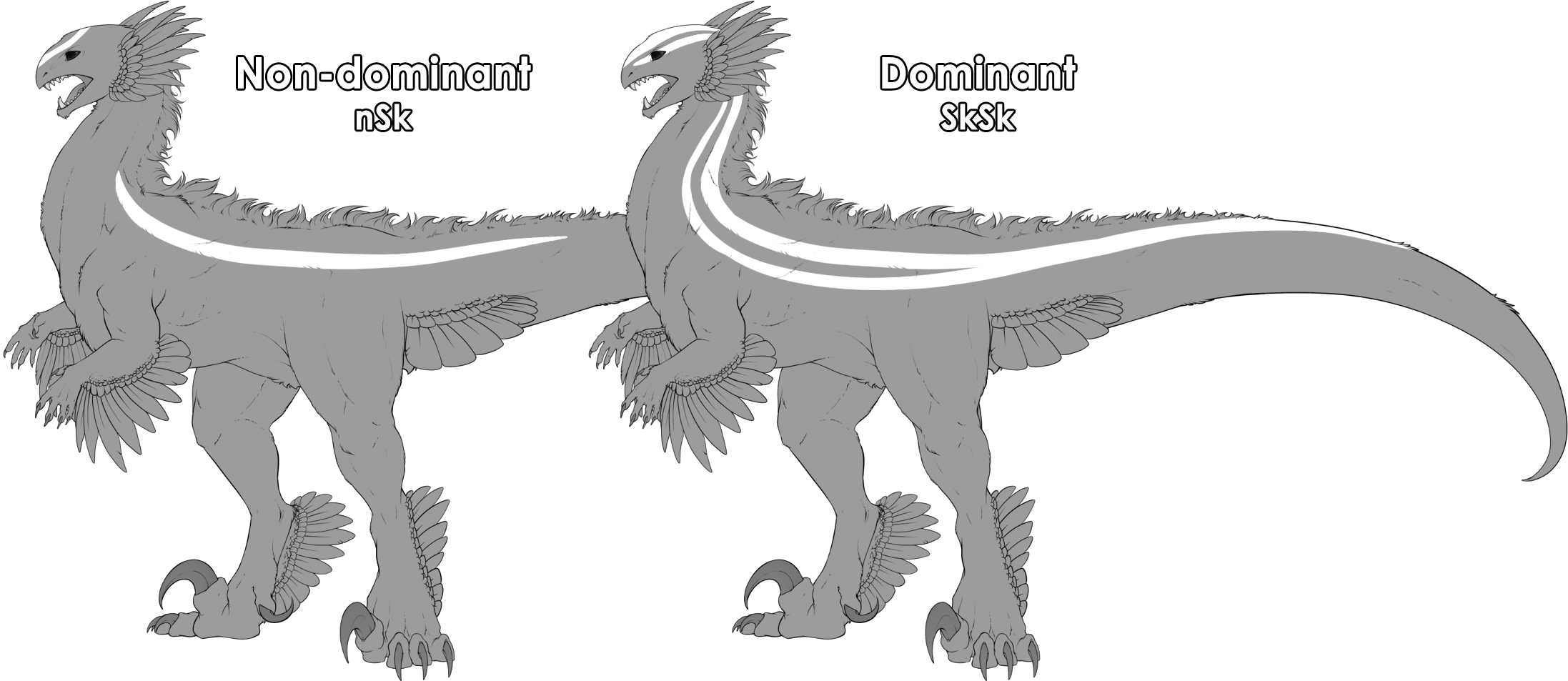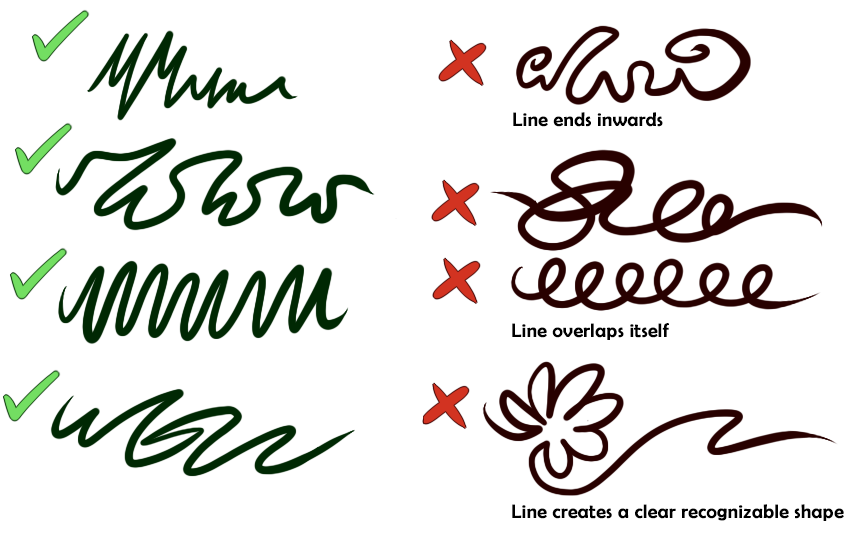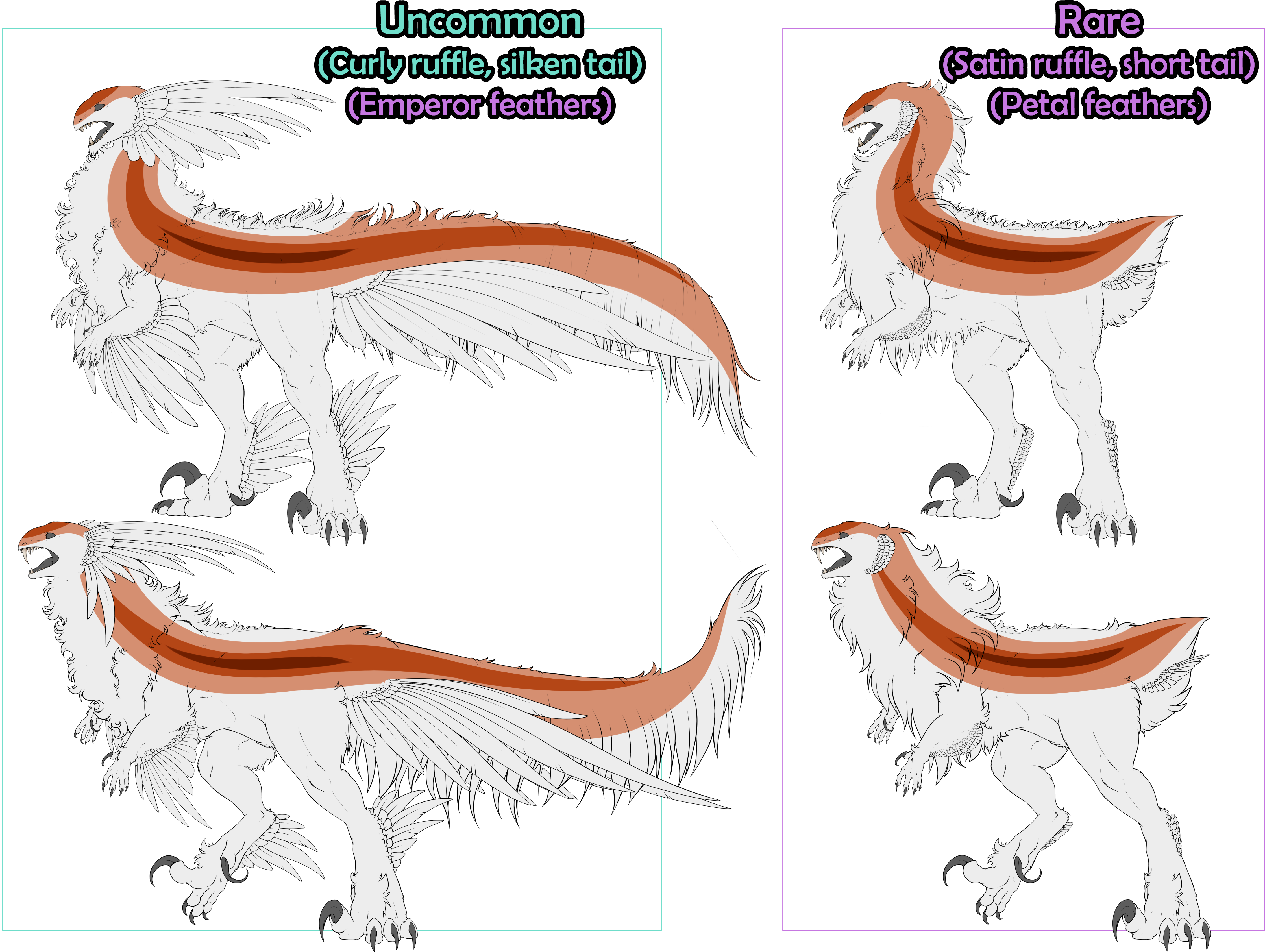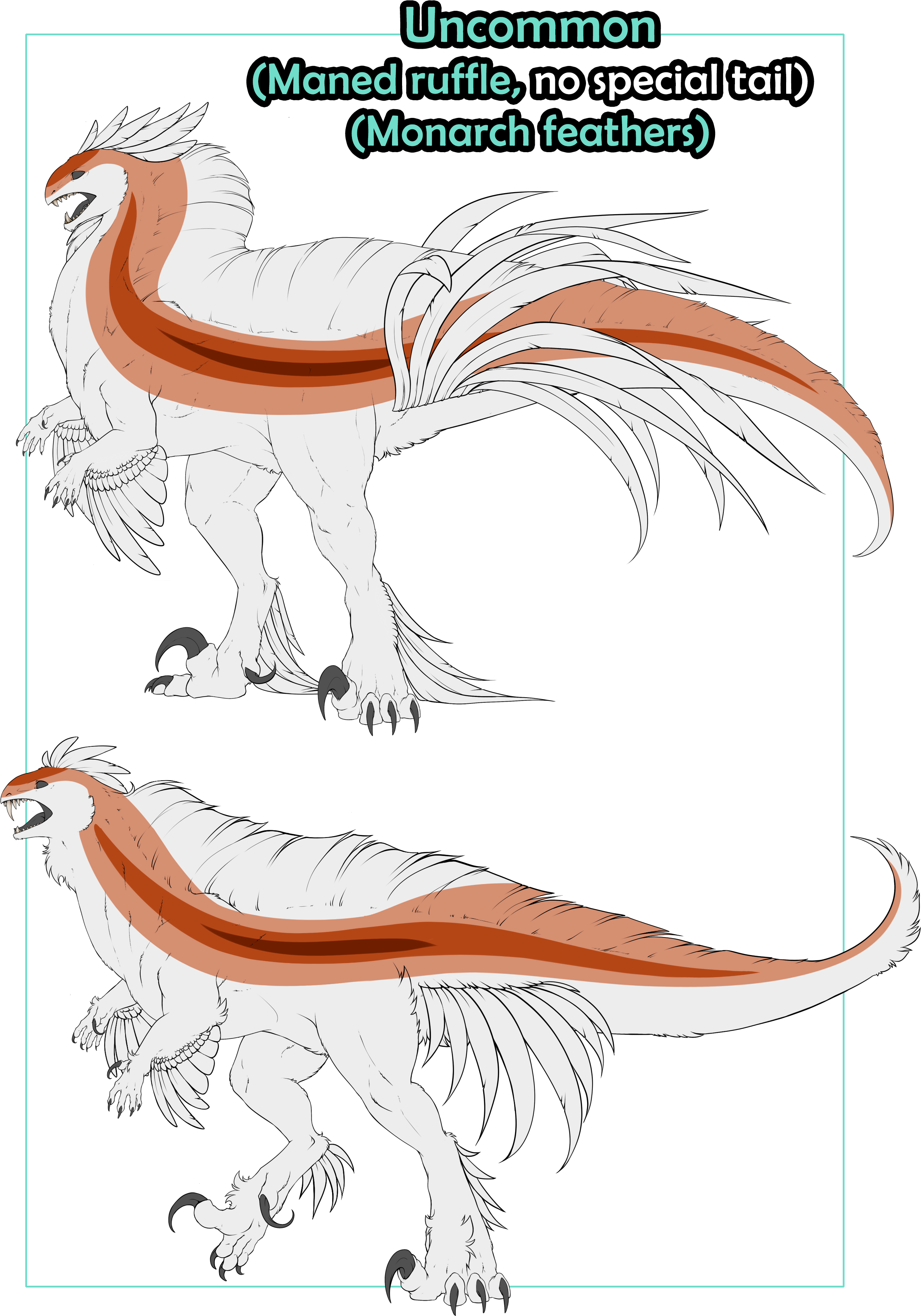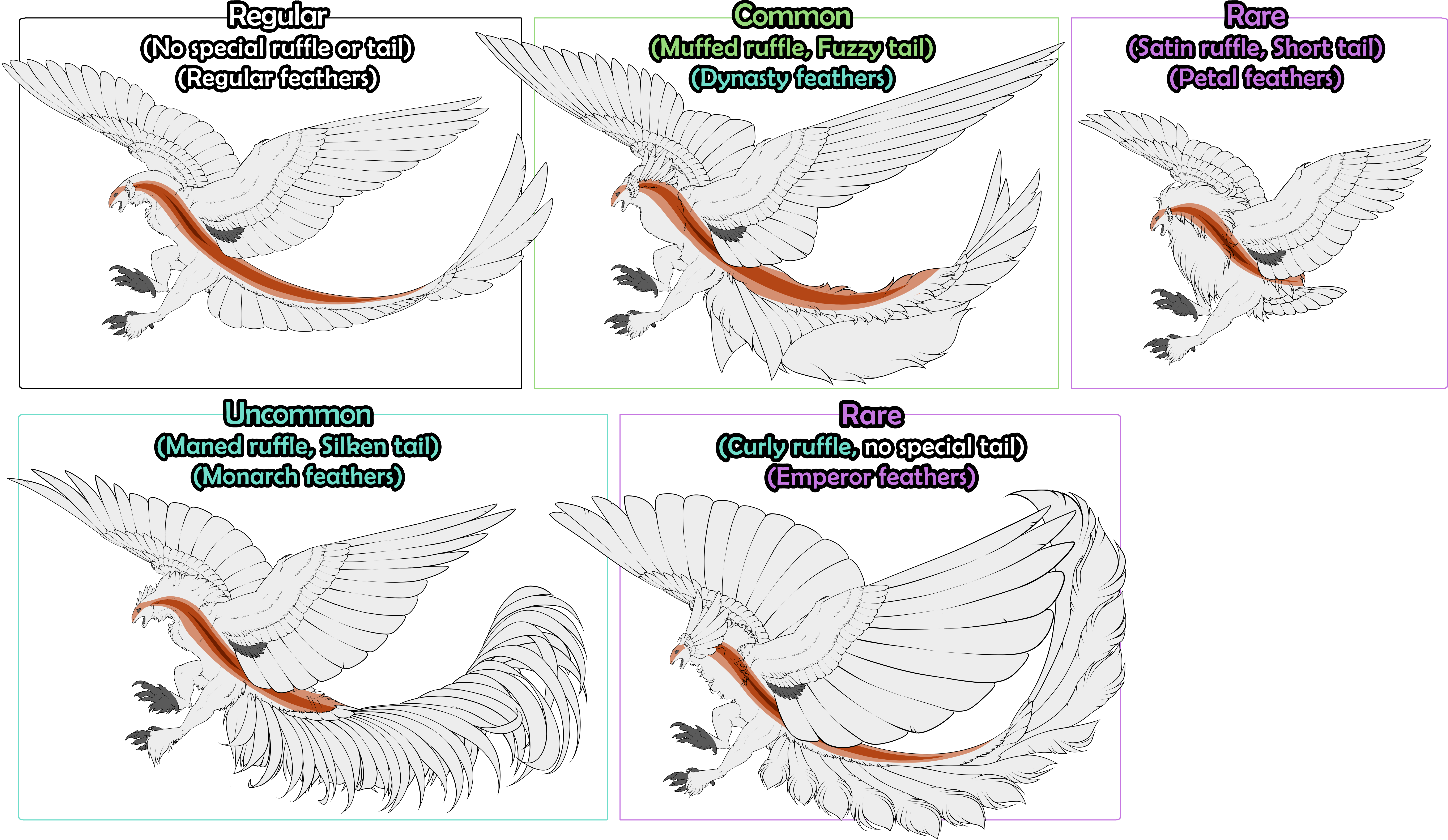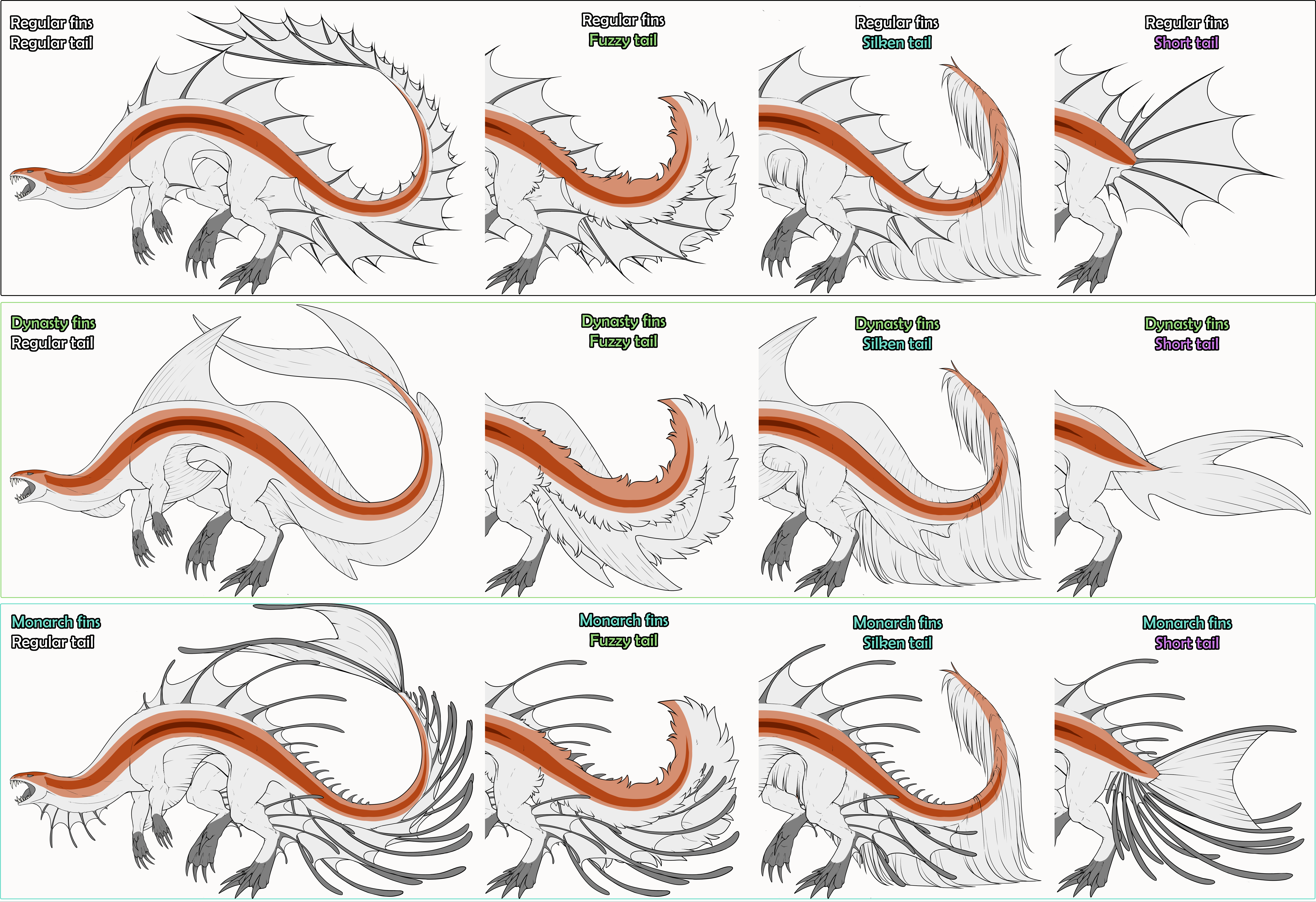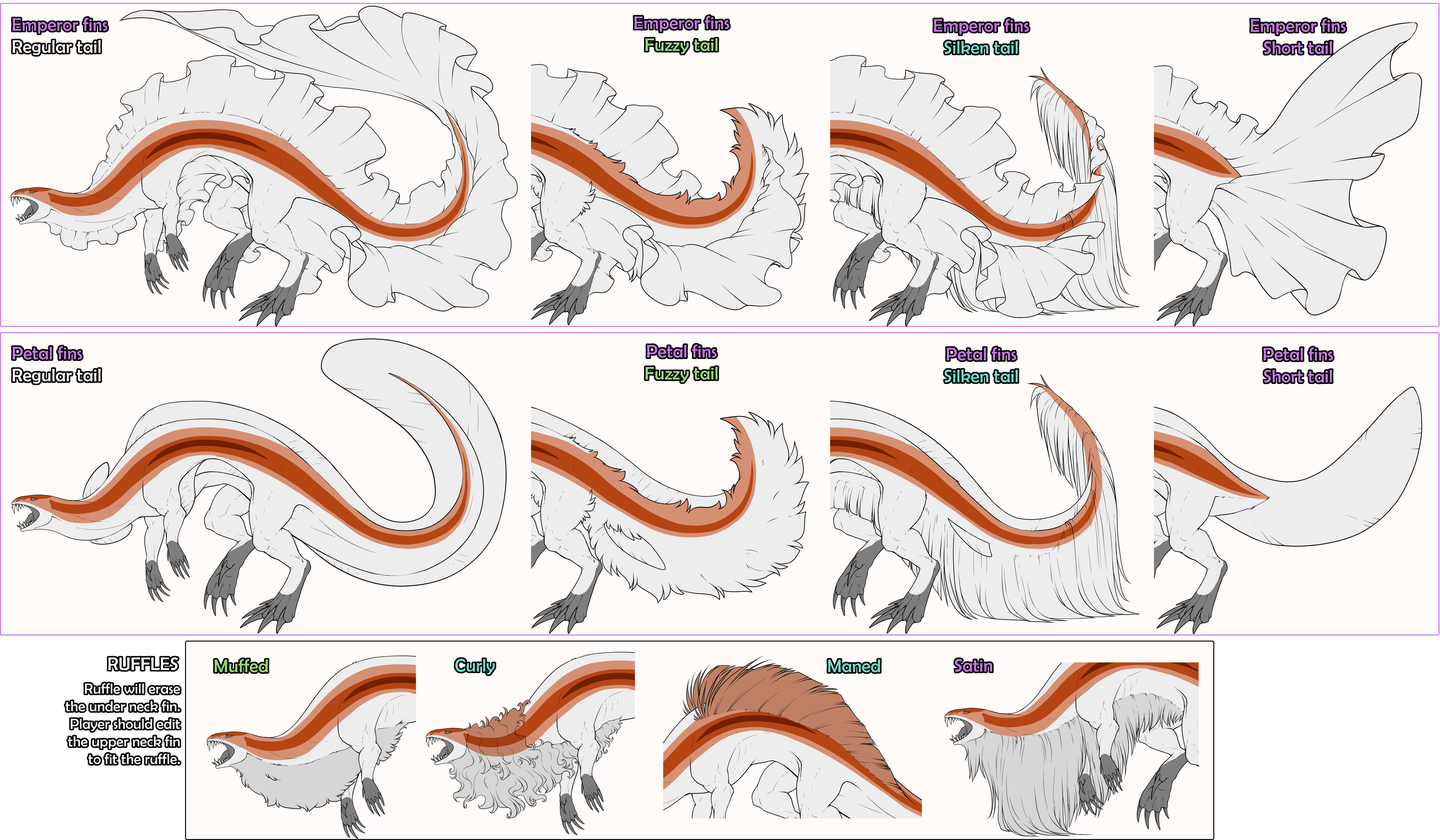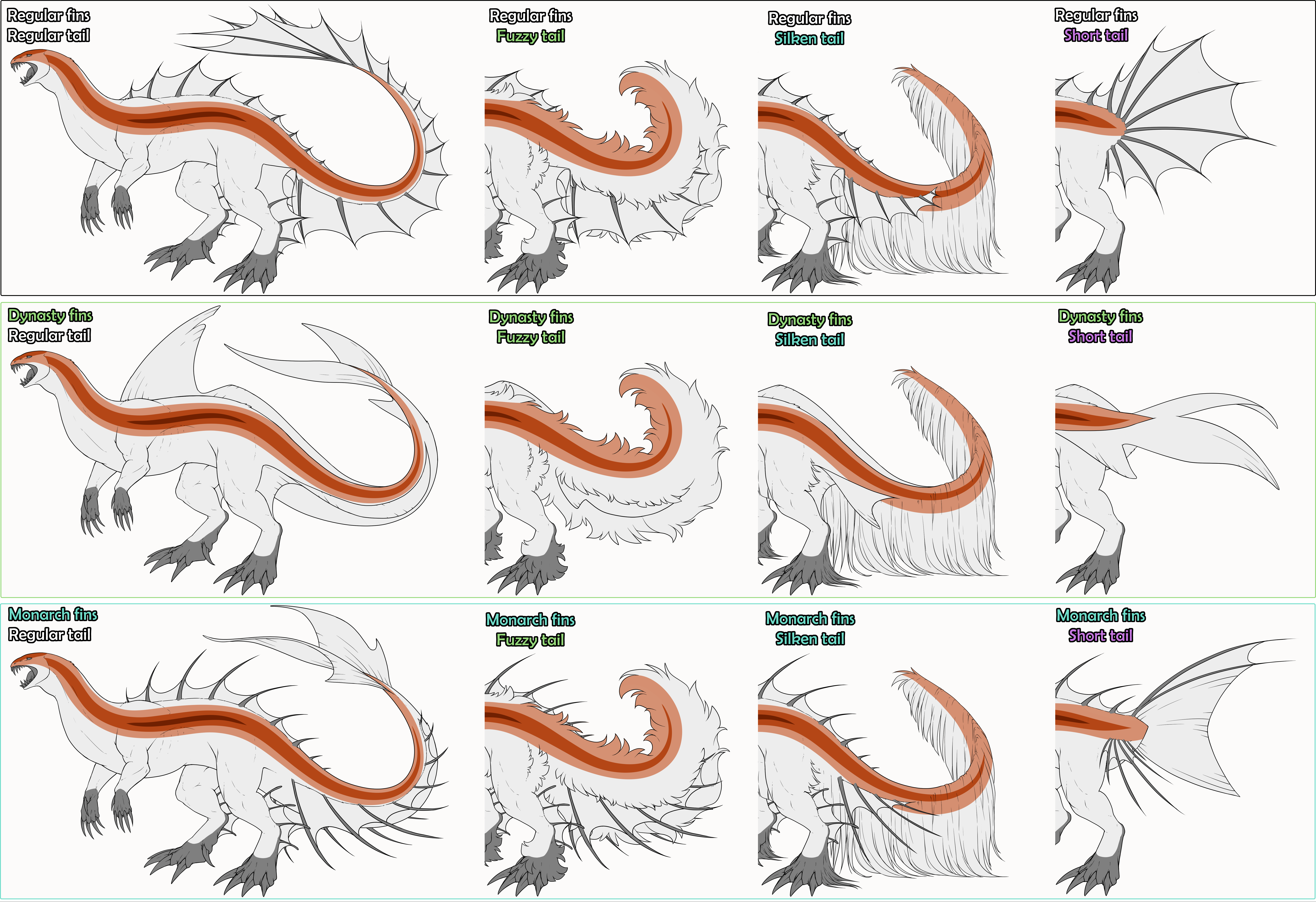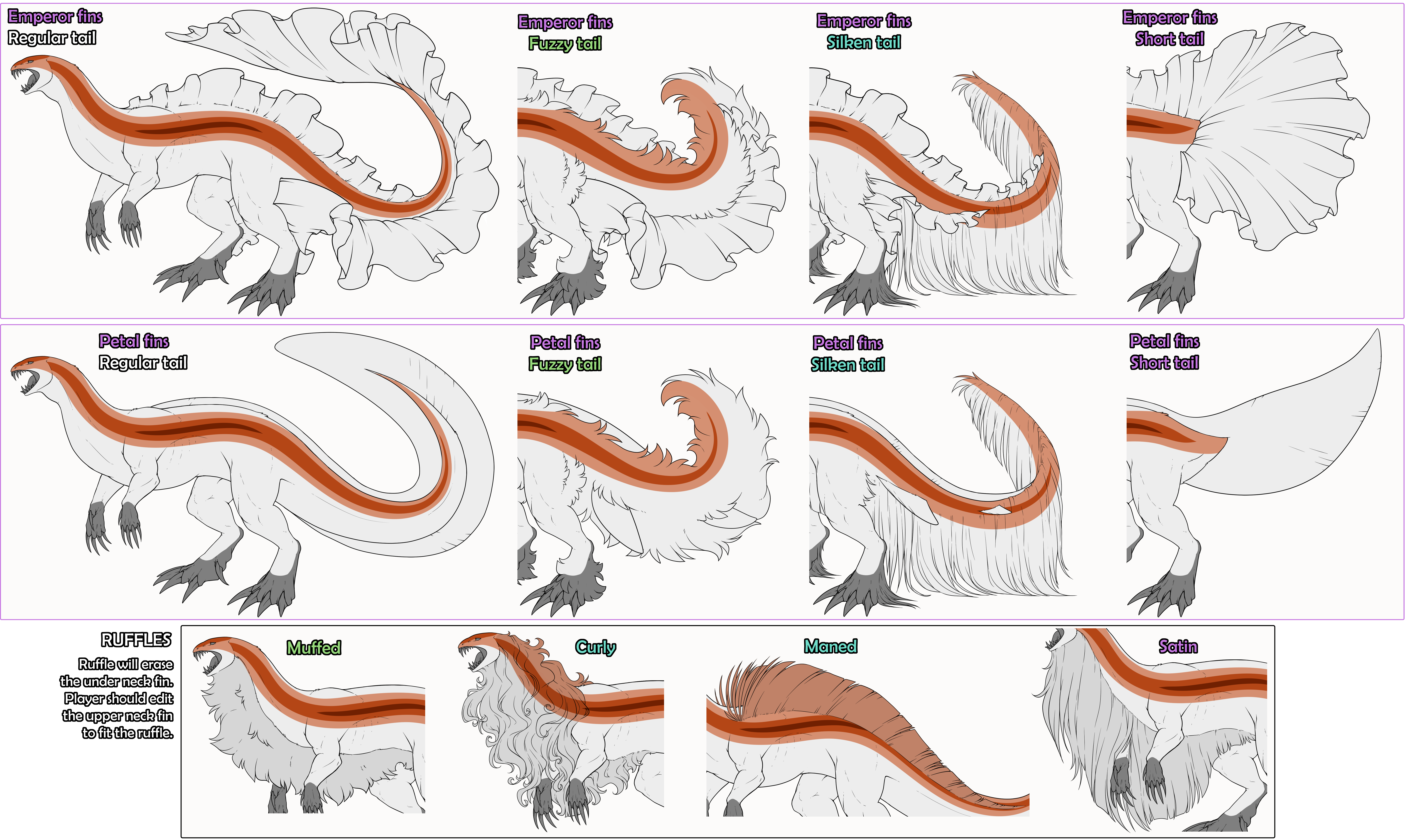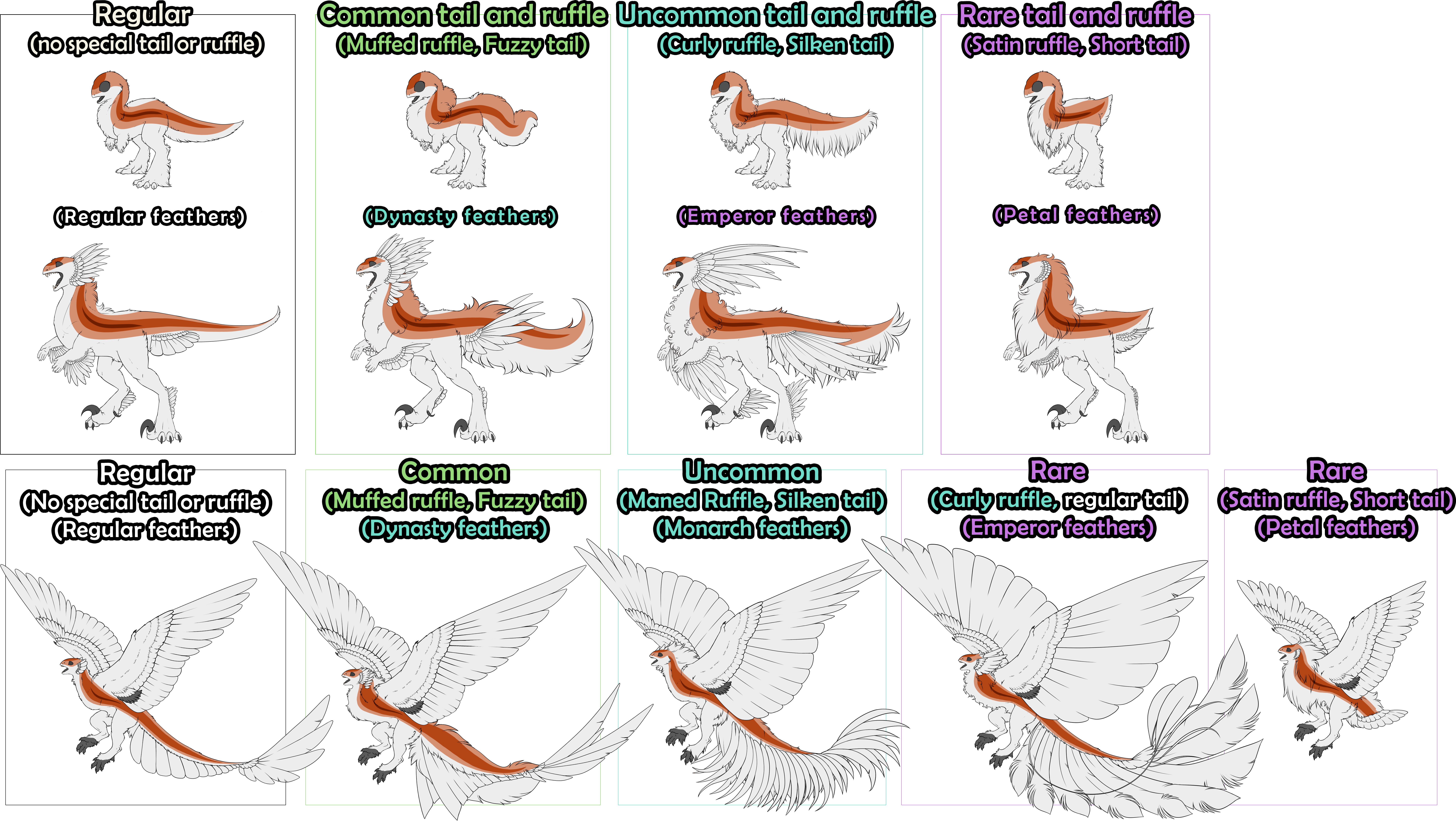Edge allowances
 Hard
HardSymmetry allowances
 Must be symmetrical
Must be symmetrical Color Allowances:

 Must white or black (exept when dominant)
Must white or black (exept when dominant)
A Guide to Skunk
Colors
Skunk MUST be black or white expect when it's dominant. Possible white and black shades and colors can be seen in the
Minimal black and white sliders shown to the left.
Skunk shape
Skunk doesn't need to be just a straight line, it can be shaped in wild ways. Squiggles and zig-zags are
possible with this marking. To the left are allowed and not allowed forms of Skunk!
Skunk line should stay within the dominant range zone, and shouldn't cross over itself. It shouldn't make recognizable shapes
such as flowers or animals. It also should start and end pointing outwards (no spirals)
Skunk also can use the full range (dominant and non-dominant) even without being dominant. Non-dominant Skunk
however can not be too thick, and may only form one line!
Dominant Skunk
In Skunk's dominant form, it can create more stripes (up to two) or one much thicker stripe! Dominant Skunk can also be colored any color allowed by the base.
Skunk Ranges
The minimum area of a kukuri's body Skunk should cover
The maximum area of a kukuri's body recessive Skunk can cover
The maximum area of a kukuri's body dominant Skunk can cover
The minimum area of a kukuri's body Skunk should cover
The maximum area of a kukuri's body recessive Skunk can cover
The maximum area of a kukuri's body dominant Skunk can cover
The minimum area of a kukuri's body Skunk should cover
The maximum area of a kukuri's body recessive Skunk can cover
The maximum area of a kukuri's body dominant Skunk can cover
The minimum area of a kukuri's body Skunk should cover
The maximum area of a kukuri's body recessive Skunk can cover
The maximum area of a kukuri's body dominant Skunk can cover

